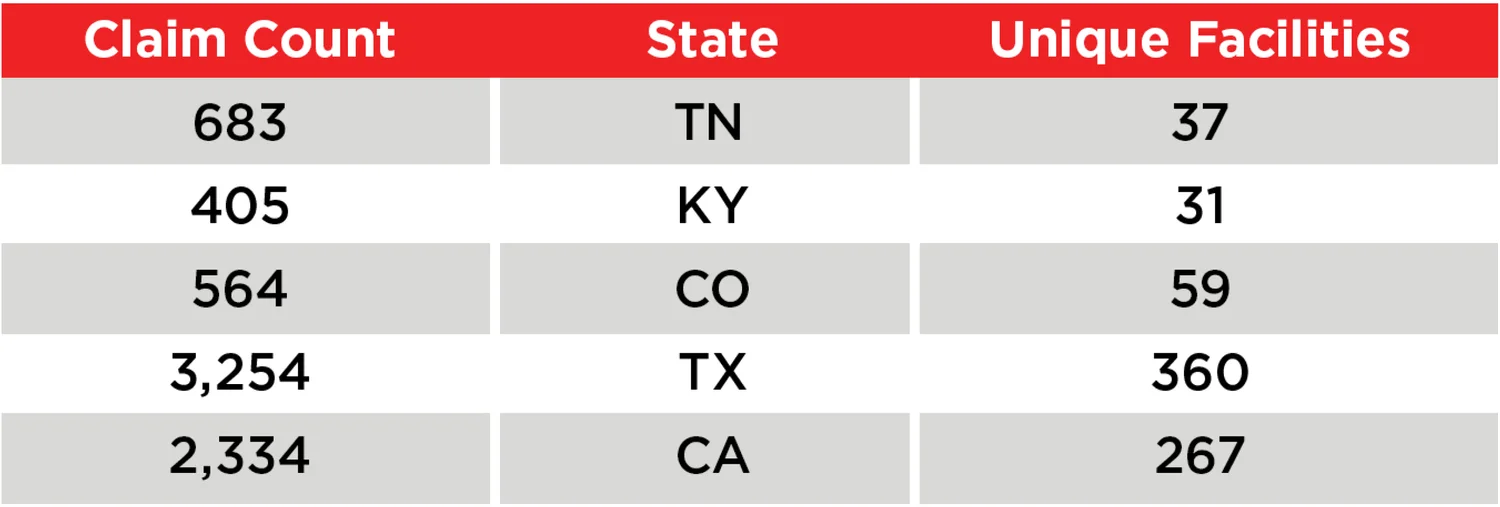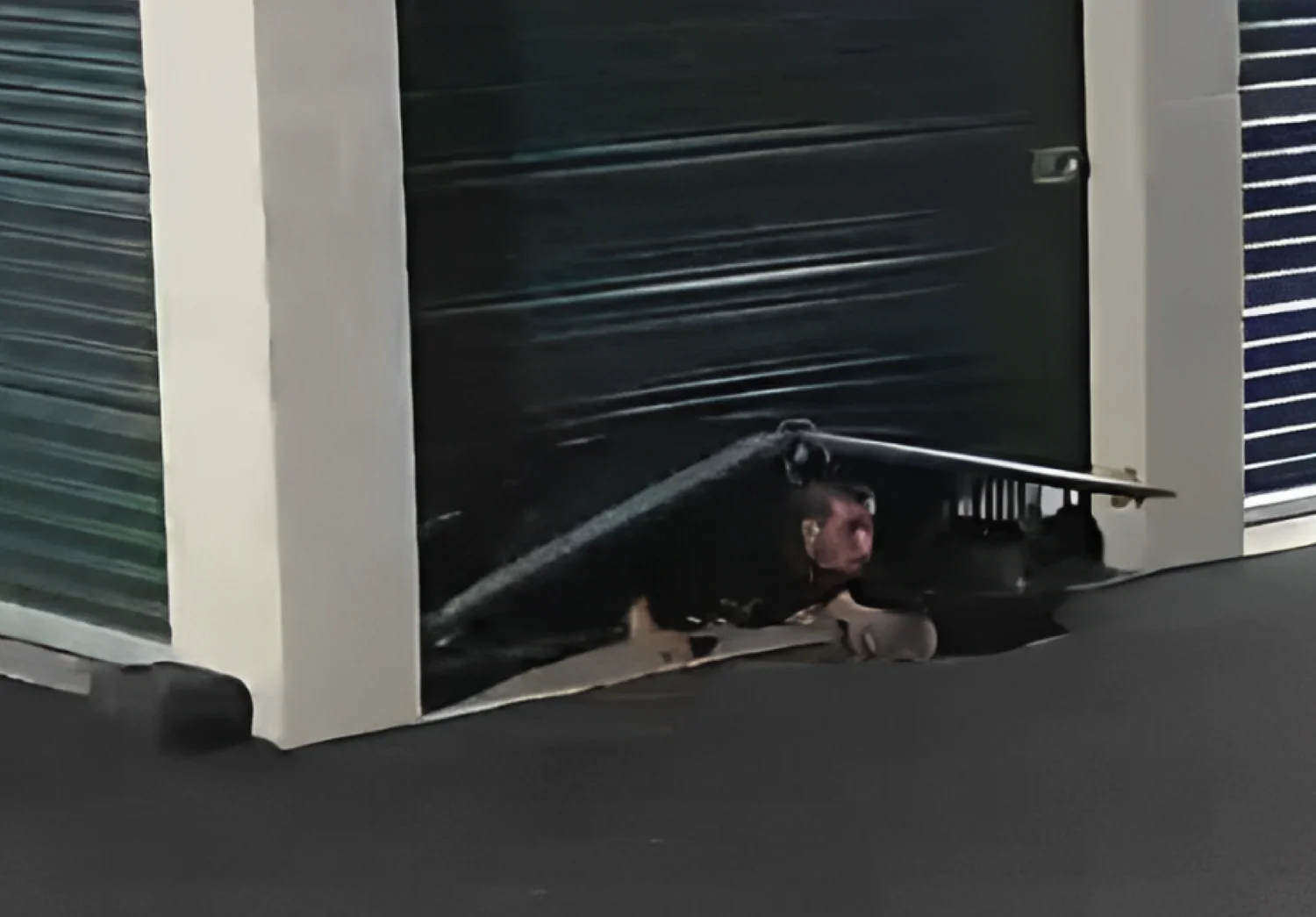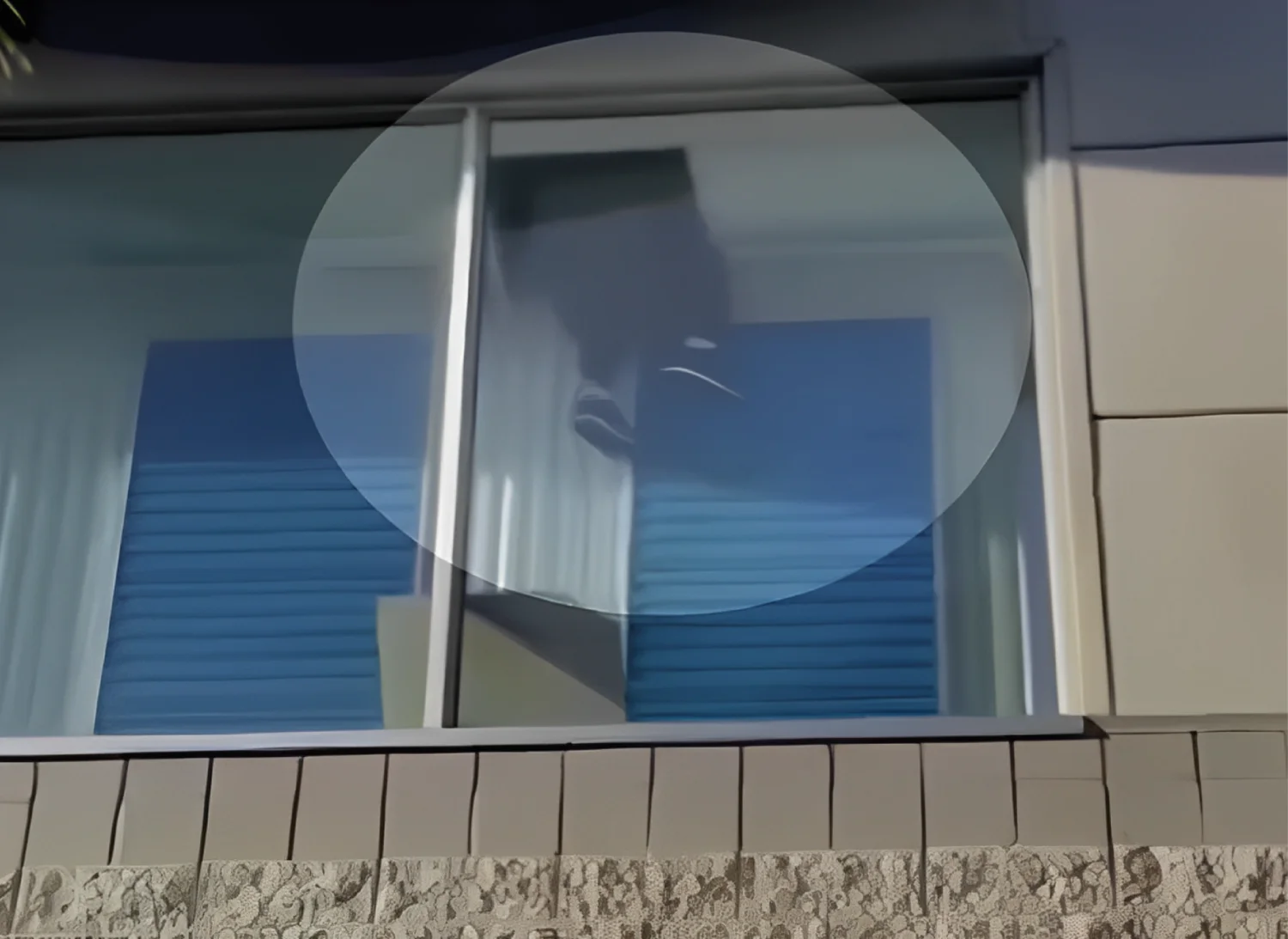
elf-storage operators wear a lot of hats. On any given day, they may play the part of customer service representative, accountant, repair tech, auctioneer, negotiator, marketers, and crime fighter. While that last one may not be true of all operators, more and more within the industry believe it is a necessary role.
“If you’ve been in storage, then you know break-ins are unfortunately a normal occurrence,” says Taylor Pierce, executive director for Great Oaks Capital Partners, LLC. “We need to partner with our tenants and nearby storage companies if we want to make a difference. If we put the same effort into theft like we do our existing customer rate increases (ECRIs), we’ll see a difference.”
But is self-storage theft that big of a threat to the industry? Some might argue that there are more than 50,000 self-storage facilities in the United States, with the average facility comprising 545 units. Therefore, when you consider the sheer number of units (around 27 million), the amount that are broken into is relatively small.
Gabriel Tushim, senior director of sales with OPTECH Integrated Technology Solutions, feels this is a form of data manipulation. “I don’t think you should be looking at the number of units but at the number of facilities. That’s when you can see that theft is becoming a big industry issue.”
Another reason data doesn’t tell the full story is because self-storage thefts often fall under the “hotel rule” of the FBI’s Uniform Crime Reporting (UCR) Handbook. This rule is used to reduce the burden of reporting burglaries of temporary lodgings, stating that if a number of dwelling units under a single manager are burglarized and the offenses are most likely to be reported to the police by the manager rather than the individual tenants, the burglary should be scored as one offense.
“This means that if a burglar hit 20 units at one location and the manager calls the police, the number of burglaries reported will be one,” explains Justin Insalaco, a retired police officer, strategic advisor to the Atlas One law enforcement safety network, and a board member with Crime Stoppers Global Solutions. “Reporting also uses the concept of ‘same time and place,’ which means that if the same person or group of persons committed more than one crime and the time and space intervals separating them were insignificant, all the crimes make up a single incident.”

“The most common way that thieves break into a storage unit is by grabbing at the bottom center of the door and doing a dead lift, bending the door up,” explains Kellen Anderson, director of sales at Trac-Rite, who recommends self-storage owners look for doors that offer some type of reinforcement so that this can’t easily be accomplished. “They poke their head underneath, and if they see something they like, they either keep bending it upwards or they then cut the lock.”
“If you put on your ‘criminal hat’ for a moment, it’s easy to see why self-storage facilities are attractive to thieves,” says Maggie Bode, director of business development for DaVinci Lock. “They are vast with only a handful of individuals on site at any given time, and hundreds of units present hundreds of opportunities for theft. Plus, they’re also often on the outskirts of town, meaning police response can be slow.”
Christine DeBord, chief commercial officer at Janus International, agrees that the prospect of simply hopping a fence and cutting a lock can be far more attractive to thieves than breaking into a home where neighbors, occupants, alarms, and proximity to police could pose a problem. However, she notes that theft could also come from inside the property. “Someone could pose as a tenant to gain access to the facility,” she says. “Or, an employee or existing tenant may see someone loading something valuable into a unit and return later to snatch it up.”
However a thief gains access, police across the country are warning that self-storage thefts are on the rise. In Arapahoe County, Colo., for example, sheriff’s office investigators say there has been a rapid increase in storage facility thefts, with 60 occurring in the first six months of the year alone. “We’ve never seen it happen at this level before,” said Sgt. Brett Cohn. “The uptick started during COVID and hasn’t stopped. We need to educate the public and take away the opportunity for these types of crimes. It’s the only way it’s going to stop.” Modern Storage Media also reported on a facility in Colorado Springs in which police had responded to nearly 30 calls in three months.
WSMV4 in Nashville, Tenn., recently investigated security issues at storage facilities, combing through a year’s worth of data from the Metro Nashville Police Department. According to their investigation, more than 75 percent of the nearly 100 storage facilities they checked had calls for theft, holdups, robberies, or burglaries. One facility had 12 units hit at the same time in one month, another six were broken into less than two weeks later, and 20 more had items stolen from them just a few months after that.
Colorado and Tennessee aren’t the only states with a self- storage theft problem. According to Xercor Insurance Services, Kentucky, Texas, and California round out the top five, however it is a national problem.

Insalaco believes a shortage of police officers is one reason for this. “Less manpower on the street means more petty theft,” he says. “But bail reform also plays a part.”
Bail reform was designed to ensure that non-violent criminals are not detained simply because they can’t afford bail, promoting fairness and reducing unnecessary pretrial incarceration. By allowing them to maintain employment, housing, and family ties, the thought was that these non-violent criminals would be less likely to reoffend. However, the Department of Criminal Justice reports that eliminating bail for select misdemeanor and nonviolent felony charges led to little change in recidivism.
“How a case is prosecuted is up to the discretion of the prosecutorial agency,” says Steve Lieberman, founding partner with the Law Offices of Lieberman & Taormina, LLP, one of the nation’s leading attorneys specializing in firearms law, self- defense, and home invasions, and co-owner of the Artemis Defense Institute. “In some jurisdictions DAs [district attorneys] have taken the position that each unit represents an individual crime against the renter. Others have taken the collective view and essentially relied on the theory that this should be a civil matter between the renter and the storage facility owner. There is no hard and fast rule.”
Because there are no hard and fast rules, Insalaco says theft charges are typically a low priority. “Let’s not forget that prosecuting attorneys are elected officials,” adds Insalaco. “They all want the high-profile cases that are going to help them get re-elected. Storage theft is not really a compelling story, and they may just want to get it off the docket quickly, so it becomes a game of ‘catch and release.’”
Nearly 12 years ago, Marshall Calvert, a revenue management analyst at Crescendo Properties, was overseeing a Public Storage facility in Las Vegas. The property had become a target for one thief, who had broken into dozens of units in the area–76 to be exact–and made off with hundreds of thousands of dollars worth of belongings. Despite Calvert’s pleas to local police to do more, the crook remained on the loose. “I’d had it,” says Calvert. “So, I took it upon myself to randomly drive into facilities when he was known to strike, somewhere between 3 a.m. and 5 a.m.”
As fate would have it, Calvert eventually encountered the man, who was also armed. “I called the police, and this time they came quickly,” he recalls. “After a bit of a standoff, they were able to subdue him and get him off the property.”
Calbert says that despite this, the thief almost got away with it. “The guy had people stating he was only there this one time, including his girlfriend,” he explains. However, Calvert and the district attorney were able to scare the girlfriend into talking by claiming to have evidence that would prove she was lying under oath and liable to get 10 years for it. “She freaked out and started screaming that he had made her lie for him and admitted that she was storing all the property at her house for him,” continues Calvert. “The DA walked back inside the courtroom, and about 30 minutes later came back out and said they made a deal and that his sentence would be in the double digits.”
Self-storage operators aren’t the only ones fighting back; sometimes tenants do some sleuthing too. Just recently, a thief had been hitting a SmartStop Self Storage facility in Homestead, Fla. One of the tenants, who asked not to be identified, said that he’d had nearly $25,000 worth of belongings stolen from him. He’d filed a police report but the criminal hadn’t been caught.
Fed up, the tenant decided to stake out the facility on his own. The morning of the 4th of July, the thief returned, but this Independence Day heist cost him his freedom. Through the facility’s large windows, he was spotted breaking into numerous units. “We noticed that the individual was actually [going] from unit to unit,” said the tenant. “The technique that he used was actually [climbing] through the ceiling.”
Witnesses filmed it all on their cell phone, even catching a moment when the burglar got stuck in the ceiling and came crashing back down to the floor. Homestead Police officers soon took center stage, capturing the crook and taking him away in handcuffs. He faces several charges, including burglary, grand theft, and resisting an officer without violence.
Of course, it’s not always safe for owners or tenants to take matters into their own hands, nor are they likely to luck out with a girlfriend who sings like a canary or a crook who puts on a window show in broad daylight.

One security company that is working on a way to facilitate this type of collaboration between self-storage operators is OpenTech Alliance, Inc. Along with Xercor Insurance Services, it has created the Self-Storage Security Council. Robert Chiti, CEO of OpenTech, says the council has a mantra: “Criminals are becoming organized; it’s time for the self-storage community to do the same.”
Chiti says it’s imperative that self-storage operators share data, work together, and document theft in order to provide law enforcement with the information they need to do their job.
“Most self-storage operators deal with theft independently,” explains Chiti. “They don’t want to talk about it, because they don’t want it to become a public relations issue. But when a self-storage industry is broken into, especially multiple units impacting numerous tenants, it’s going to make the news anyhow. So we aim to create a format for collaboration.”
To be part of the council, operators must sign confidentiality agreements, stating that they will not use information to portray any other facility in a negative light. “We strive to create an environment where there is conversation without fear,” says Chiti. “We want to know what operators are doing about theft, what they’re seeing out there. Is there vandalism? A suspicious car? Tenants behaving oddly? Share that information. It could be valuable for others.”
The ultimate goal of the Self-Storage Security Council is to create a data tracking system. Since its inception, Chiti says four more insurance companies have joined, and there is now a network of more than 100 operators across the country sharing information. “We are organizing as an industry to protect ourselves and our tenants. With all of our data, we are starting to see patterns. We’re able to collect evidence to give to the police. And they’re able to turn what might be a misdemeanor into a felony and put these criminals away for a while. It’s about being proactive, not reactive.”
Chiti says the concept is still incubating, as the network works on structure, processes, and attracting new members. At that point, he says the plan is to go to the national Self Storage Association so build a bigger, more robust platform. “It doesn’t matter which security platform a facility has, which insurance company they work with,” Chiti says. “This is not about selling a product. This is about protecting the industry.”
If you are interested in being part of the Self-Storage Security Council, contact Kristie Adams at KAdams@OpenTech.com.
Unfortunately, many other self-storage operators didn’t step up to support their tenants, says Pierce. “I’ve never seen a group of individuals out for blood like I did yesterday, but of the many that were there fighting for justice, only one person was there on behalf of their company and their tenants. The rest were tenants from other facilities representing themselves alone and bearing the majority of the $500,000 in losses.”
“You have to advocate for the police to take these break-ins seriously,” says Eric Isaacson, a real estate investor with a focus on self-storage. He recalls the time one of his investments had a break-in and it was all on camera. “We saw where the burglar touched the wall, and we demanded that [the police] fingerprint that area. It turned up a print and they caught the guy.”
Isaacson says the crook then confessed to 12 other break-ins. “I went to the grand jury and said we have to set an example that we take this seriously. Our tenants loved our bulldog approach and felt cared about.”
Pierce understands the frustration. “We had one detective that wouldn’t answer calls, but another that was on it 100 percent,” he says. “So there’s the side of doing our due diligence, then the side of really pushing law enforcement to move forward.”
Tushim agrees. “The best solution to these types of events is being able to provide as much information as possible to the authorities, as soon as possible, to help them create a case. This means fingerprints, quality photos or video of the perp, a description of the vehicle and its license plate. Much of this information can be easily provided by using the existing security infrastructure in a facility, or by adding a few additional elements.”
“Ultimately, there needs to be accountability in this business,” continues Tushim. “If someone is paying you to store their stuff, it’s up to the facility to keep it safe. That means keeping up maintenance, for example. If your gate is broken and you’re not bothering to fix it, but you’re not discounting my rate for this sudden safety issue, that’s not right. The more seriously you take security, the more you can charge. Don’t undermine your business by only thinking with your pocketbook. This is how some self-storage owners fail themselves.”
Finally, when a case does go to court, Pierce firmly believes it’s important that owners show up for their tenants. “I’ve met good people in the courtroom that lost everything they had to their name with no backing from their facility,” he says. “As individuals, and as an industry, we need to be there for our tenants.”